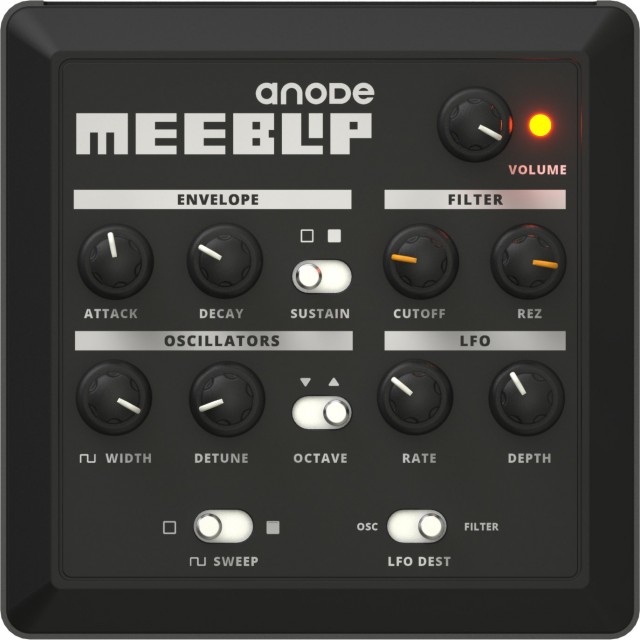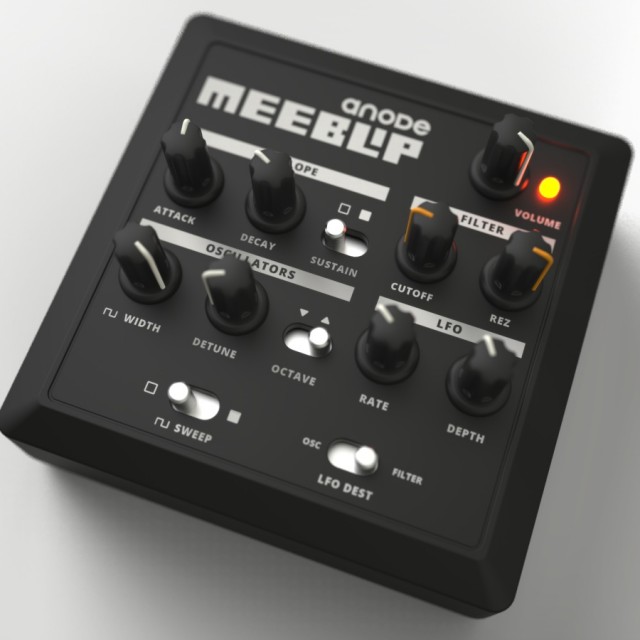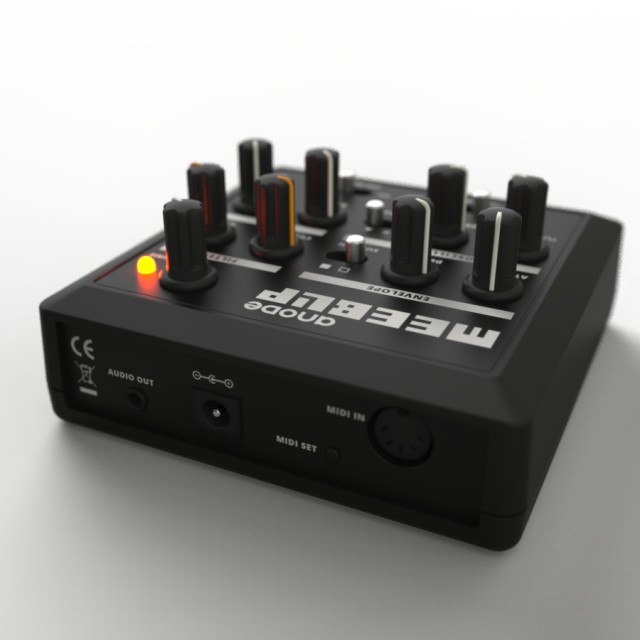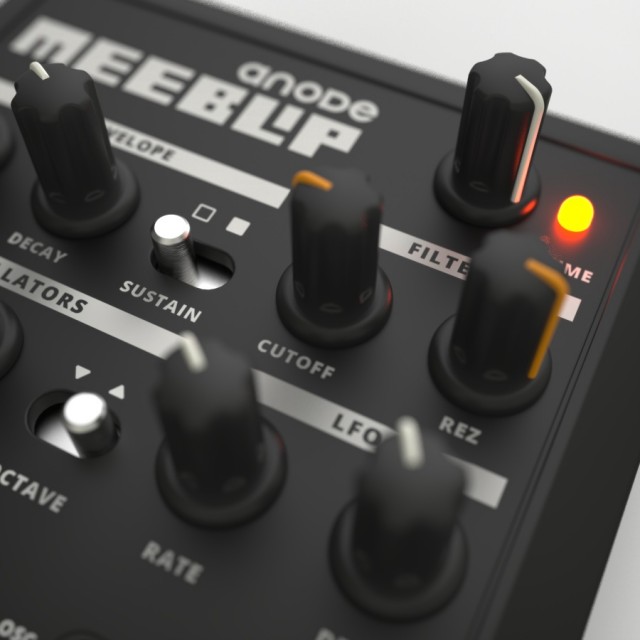The challenge: fit everything you really want from a bass synth into a 4″ x 4″ square. Make every parameter hands-on, with full-sized knobs and switches. Give it an analog filter that can be angry, not just nice.
Our solution: MeeBlip anode. It’s the new collaboration between CDM and instrument designer James Grahame. Together with James’ engineering work, we’ve cooked up a little package that focuses on packing personality:
- Digital oscillators meet an original analog filter
- Grungy, bass-heavy sounds
- Compact, 4” x 4” case (approx. 100 x 100 mm)
- Modulation, envelope, tuning, and pulse width controls
- MIDI input for compatibility with vintage and modern hardware, computers, and (with a compatible adapter) iPad and iPhone
And here’s what anode sounds like – completely unprocessed, recorded straight out of the anode’s audio jack (more sounds to come):
Price: US$129.95 / 129,95€ / £109.95
From now through December 3, though, you can it at a special Thanksgiving discount for presale customers:
US$109.95 / 109,95€ / £94.95
Presale means these are built to order – we are able to more quickly scale up volume of case manufacture – and shipped to you as quickly as we can after final assembly and testing in Canada. (ETA from now: 7 weeks.)
anode is our biggest release since the original MeeBlip three years ago. It’s been a constant reminder of why I want to be making hardware as well as writing about it. We can’t wait to get it in your hands.
And I know we’re likewise eager to answer your questions and comments – please, ask away. Having seen some discussion online, I’ll already say this:
Hell, yes, digital. MeeBlip has always been about straight-to-the-metal digital coding. The variable-pulse-wave oscillators on anode alias at the low end for extra grunge, with anti-aliasing higher for more versatility on melodies. So, we still have digital oscillators – newly tuned for sound that’s like MeeBlip, but better.
Hell, yes, analog. For anode, James Grahame devised a new analog filter. It’s a departure from most of the KORG MS-style or transistor/diode filters currently popular on the market. It still behaves like a classic low-pass in use, but it sounds aggressive, especially as you add resonance. We wanted to make sure there was no part of the filter range that felt boring or conservative; that’s not what this instrument is about.
Simple, playable. Each knob, each switch, each range has been carefully considered (sometimes, hotly debated) to result in anode. You get hands-on control, plus a MIDI message corresponding to each parameter for automation (with the exception of analog filter resonance).
Hackable. anode is designed with the assumption that many players won’t change a thing. But if you do, we’ve made it easier to modify both firmware and software. Component swaps can transform that sound of the filter; you can add features you want like audio in or CV in if you really want. We’re also busily finishing the next-generation MeeBlip micro board, a pre-assembled board that you can easily build into your own projects, so we aren’t ignoring DIYers. MeeBlips are now all assembled projects, but if you want to solder and construct and write code, you can build on what they give you.
And yes, it’s still open source hardwareThe New MeeBlip anode @ MeeBlip blog
Or skip straight to getting your own:
http://meeblip.com/get-one
All images here rendered by
Arvid Jense, industrial designer and musician.



